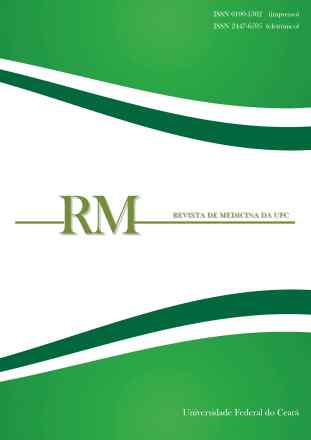A proposed waist-to-height ratio (WtHR) cutoff point for metabolic risk in Brazilian Turner syndrome patients
Revista de Medicina da UFC
A proposed waist-to-height ratio (WtHR) cutoff point for metabolic risk in Brazilian Turner syndrome patients
Autor Correspondente: Samantha Dodt Farias | [email protected]
Palavras-chave: Waist-height Ratio; Turner syndrome; Metabolic syndrome
Resumos Cadastrados
Resumo Inglês:
Objective: To propose a waist-to-height ratio (WtHR) cutoff point for metabolic risk in Brazilian Turner syndrome (TS) patients. Methods: Retrospective study of anthropometric, clinical and biochemical data related to the metabolic syndrome (MS) of 45 TS patients at a specialized center. The accuracy and area under the receiver operating characteristic (ROC) curve of body mass index (BMI), waist circumference (WC) and WtHR to identify the presence of at least one of the biochemical components of MS were calculated. Results: The average age was 23.8 years (4-61 years), 43% were overweight and 11% had MS. At least one component of MS was present in 80% of the patients, being more common central obesity, low levels of HDL and dysglycemia. None had diabetes. Patients with some of the biochemical changes in MS had higher WtHR than those without metabolic alterations (0.57 vs. 0.48, P = 0.001). In adult patients (20-61 years, n = 28) the WtHR > 0.5 had 87% sensitivity and 80% specificity to identify patients with some component of MS, demonstrating greater accuracy than BMI or WC. Conclusion: We propose a WtHR cutoff point of 0.5 for metabolic risk screening in Brazilian TS patients.

